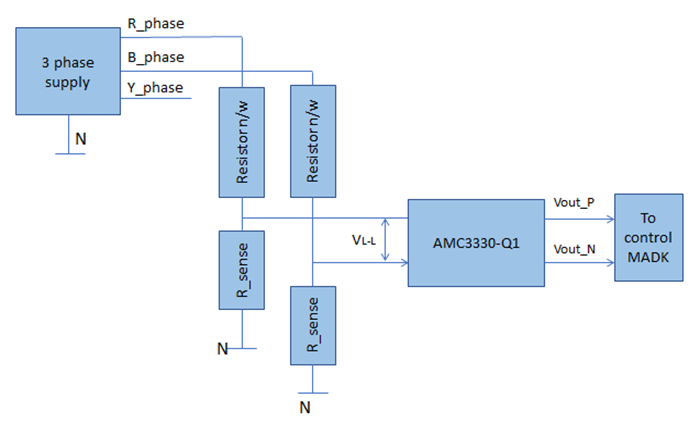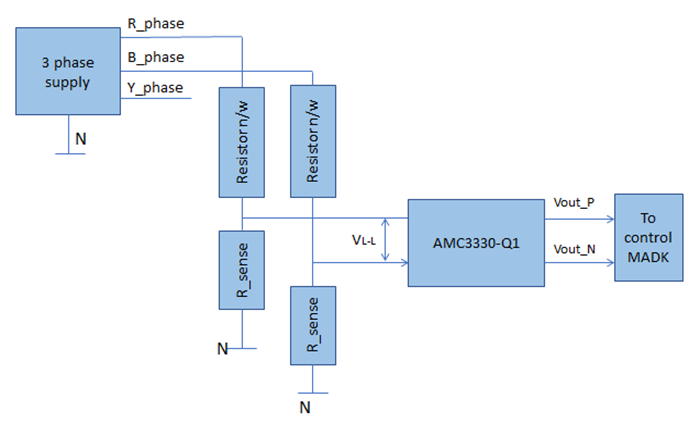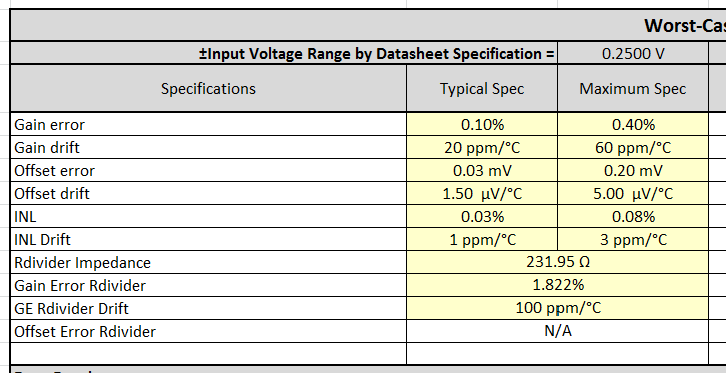Other Parts Discussed in Thread: AMC3330, AMC3301-Q1, AMC3301, AMC1300, AMC1301
Hi,
As I got to know that AMC3330-Q1 will be available widely by the end of October, but since we need to freeze our design before that, so can you please suggest an alternate part similar to AMC3330-Q1 for AC line to line voltage measurement application. Attached an application block diagram for your reference.










